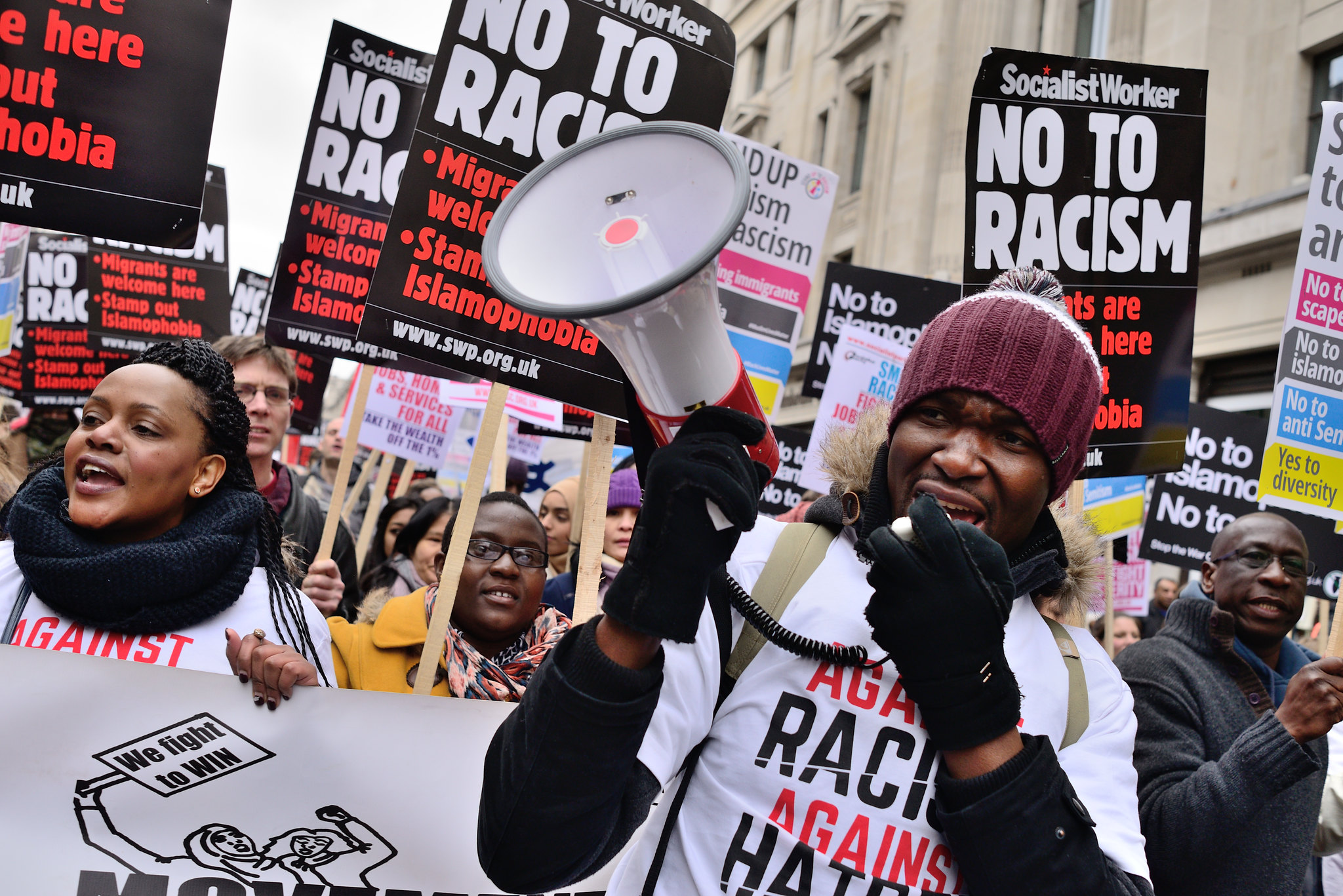One must recognize the daunting role racism has historically and currently plays in international law and policy formation and research. In the United States, recent movements by civic organizations animate links between domestic and international politics; human rights restrictions for minority individuals in the U.S. resonates globally.[1] While the United Nations has recognized their intention to combat racism through its world conferences, many experts have explained a deficiency in the consideration of the role played by race and racism in the shaping of contemporary international affairs and relations resulting in limited understandings of race in world politics.[2]
Scholars recognize a “norm against noticing” the role of race in the study of international law and in shaping international affairs, which has been perpetuated by an avoidance by many scholars of international relations to examine the role of race.[3] “[C]ritical theorists have long described the silence of IR scholars on race, and postcolonial scholars have forefronted the role of race in colonialism . . . Despite this neglect, however, it is exceedingly unlikely that systemic racism, now propelled to broader public consciousness, ends at the water’s edge, a myth about domestic politics once believed to characterize international politics.”[4] This norm against noticing has, “been long integrated” resulting in constrained understandings of race in international law.[5] In describing the norm against noticing the role of race in international relations, scholars highlight a designed, color-blind, and “willful amnesia” about race in international law through the exclusion of critiques of the silence of the discipline of international law on race, and the advancement of essentialist notions of race, removing “race from its biological and anthropological moorings, effectively rejecting the ‘hierarchy of races’ assumption that anchored the developing field of IR . . . .”[6] Following recent studies of racial hierarchy in international relations, three scholars examine the role of race in international law, and “posit two faces of racism in international relations: one that perceives majority non-White countries as deficient in essential domestic or international capabilities and a second that perceives these same countries as inherently aggressive and threatening.”[7]
Dr. Mohsen Al Attar suggests the deficiency described above in his essay confronting the racism of international law.[8] Dr. Mohsen Al Attar asserts:
[J]ust as denial is politically expedient, it is also pedagogically popular and a familiar trope in the teacher of international law. Notions of racial differentiation and supremacy were central in shaping the regime, yet racism’s link to international law is unknown to those who study it.[9]
While experts like Freeman and Attar highlight the limited discussion of racism and its consequences for international law and policy, international organizations, such as the United Nations, have made a formal recognition, seemingly addressing this issue, including their resolution seeking to examine and confront legacies of colonialism, systemic racism, enslavement, law enforcement, and police violence.[10]
If scholars have critiqued international law for its constrained examination of the role of racism within it, how is it also true that the United Nations has examined, addressed, and expressed their intention to combat racism and discrimination in international law? The United Nations has long recognized their intention to address and combat racism through its world conferences: the First World Conference to Combat Racism and Discrimination in 1978; the Second World Conference to Combat Racism and Discrimination in 1983; the World Conference Against Racism, Racial Discrimination, Xenophobia, and Related Intolerance in 2001; Durban Review Conference in 2009; 10th Anniversary of the Durban Declaration and Programme of Action in 2011; and the Durban Declaration and Programme of Action in 2021.[11] Despite the prohibition of discrimination by the United Nations, “many individuals and groups belonging to the minority continue to experience various forms of discrimination, especially in countries with a dominant majority or a history of colonialism and occupation.”[12] Efforts by the United Nations in their world conferences has resulted in the organization and mobilization of education and information relevant to the prevention of discrimination and protection of human rights; for example, the 2001 World Conference against Racism, Racial Discrimination, Xenophobia and Related Intolerance created discourse among thousands of “non-governmental organizations, youth groups and networks [which] had an impact on millions of people.”[13] However, efforts by the United Nations to prohibit discrimination and promote human rights for all, have been frustrated by the constrained consideration of race within international law, systemic racism in international law, and an “inadequate capacity to prevent cases of discrimination within the jurisdiction of the States . . . ” where discrimination is systematic.[14]
Attempts to understand and address the interplay between racism and international law are historically constrained and thus insufficient. While efforts from intergovernmental organizations appear to focus on the issue, experts including Attar, Freeman, and practitioners of Anti-racist pedagogy call-out a Eurocentric teaching and approach to the body of research which consciously prevails and limits depth of understanding of the role racism plays in international law and policy.[15]
“The international community must now take heed of the complexity of the politics of race and how it fuels human rights abuses, including genocidal acts and crimes against humanity . . . What is clear is that, although there is ample evidence of the consequences of racial discrimination in opportunity structures, including political and cultural products, health outcomes, well-being and dignity, concrete actions to address ‘hidden abuses’ remain inadequate.”[16]
[1] Bianca Freeman et al., Race in International Relations: Beyond the “Norm Against Noticing”, 25 Ann. Rev. Pol. Sci. 175, 176 (2021).
[2] Id. at 175, 177.
[3] Id.
[4] Id. at 176.
[5] Id. at 175.
[6] Id. at 178.
[7] Id.
[8] Mohsen Al Attar, “I Can’t Breathe”: Confronting the Racism of International Law AfSDJN (Oct. 2, 2020), https://www.afronomicslaw.org/2020/10/02/i-cant-breathe-confronting-the-racism-of-international-law/.
[9] Id.
[10] John-Luke Venables, UN Takes on Global Racism HUMAN RIGHTS WATCH (Aug. 12, 2021, 12:30 PM), https://www.hrw.org/news/2021/08/12/un-takes-global-racism.
[11] U.N., Conferences Racism, https://www.un.org/en/conferences/racism.
[12] Alex Otieno, Eliminating Racial Discrimination: The Challenge of Prevention and Enforcement of Prohibition, U.N. Chronicle, https://www.un.org/en/chronicle/article/eliminating-racial-discrimination-challenges-prevention-and-enforcement-prohibition (last visited Nov. 4, 2022).
[13] Id.
[14] Id.
[15] Attar, supra note 8.
[16] Id.


